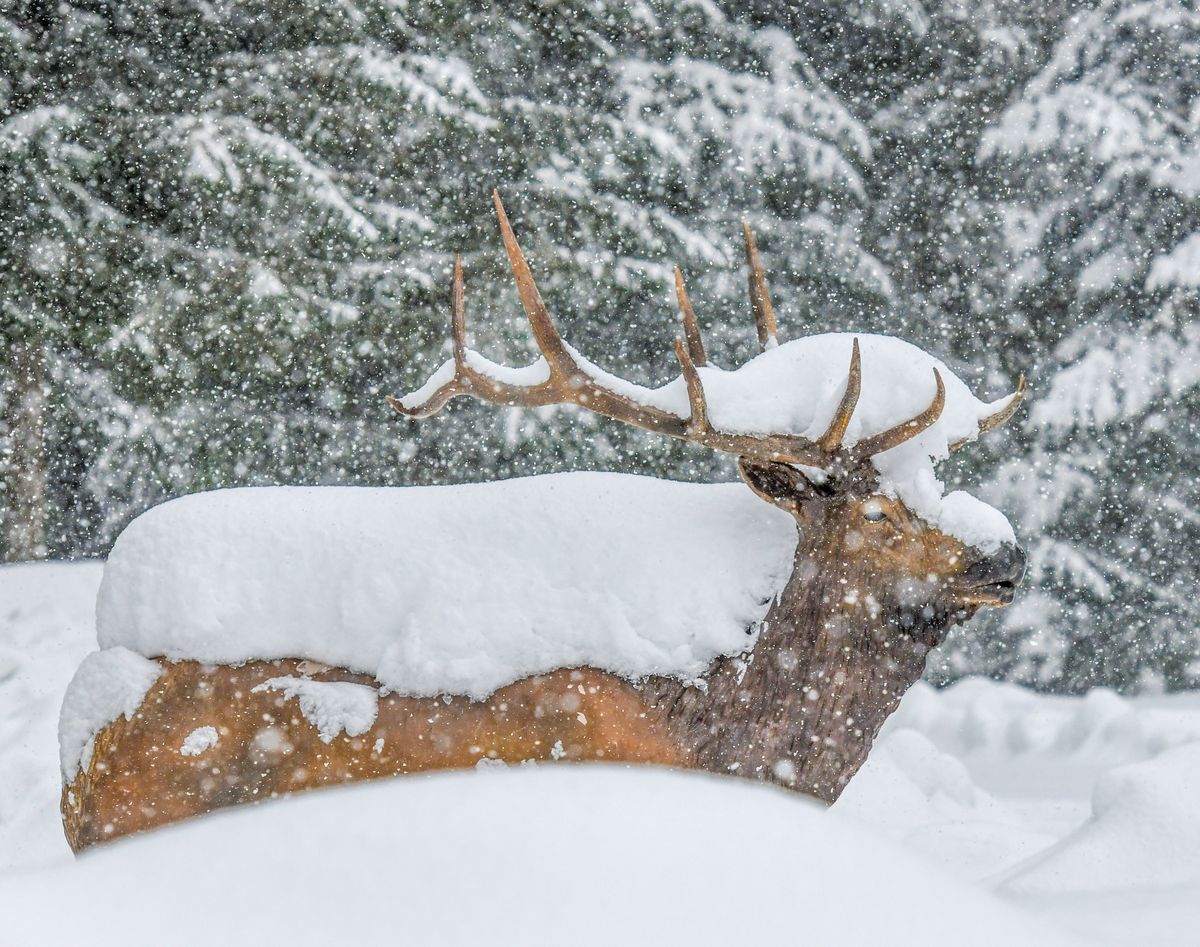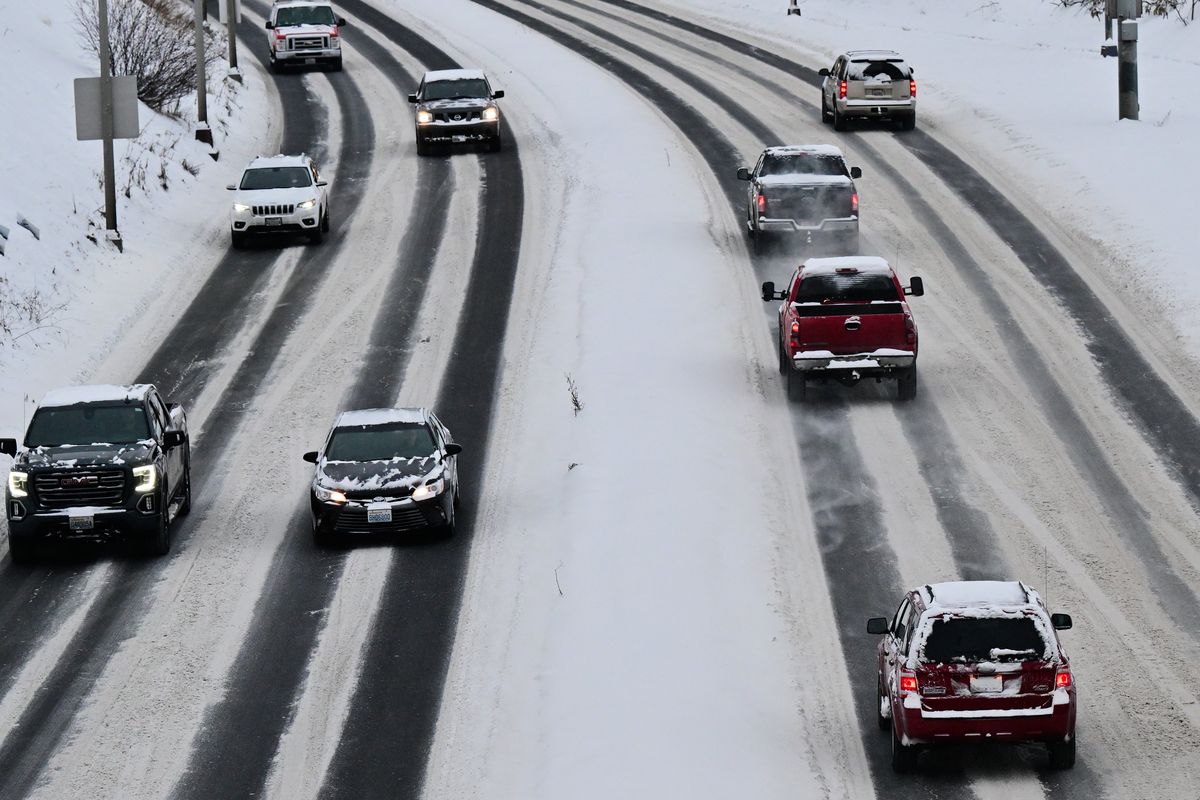Spokane braces for lowest temps in 14 years as ‘life-threatening cold’ sets in

With dangerously low temperatures in the forecast for the week ahead, no one seeking refuge from the cold will be turned away from the Trent Resource and Assistance Center, Spokane Mayor Nadine Woodward said Tuesday.
The National Weather Service predicts temperatures with windchill could reach minus 15 degrees Fahrenheit on Wednesday and minus 23 Thursday as an Arctic front sweeps across the region.
Though more staffing is needed for major increases in extended occupancy of the Salvation Army-managed homeless shelter, a bed or mat will be offered to anyone in need during the inclement weather, Woodward said.
“As (the Salvation Army has) said numerous times, they will not turn anyone away,” she said. “And if there is capacity in any of the other shelters, they will do their due diligence and get people to those beds as well.”

Officers and homeless outreach teams will continue handing out bus passes to get those sleeping on the street to the shelter on East Trent Avenue, Woodward added, as well as broadly informing the homeless of resources available to them.
Spokane Fire Chief Brian Schaeffer said firefighters will pull over to educate homeless people on shelter options, as well as provide bus passes or other transportation options so they can access housing.
Schaeffer said firefighters have handed out blankets and water in the past, “but this is too much of a critical situation to suggest at all that it’s survivable to be out in this upcoming weather,” he said.
There are no plans to bring buses downtown or to the Camp Hope homeless encampment to transport people to the shelter. Past attempts were ineffective, Woodward said.
“We have had, in the past, (Spokane Transit Authority) buses outside of the encampment, and I can count on one hand how many takers we had,” she said.
There were 271 people staying at the Trent shelter Monday night, down from 332 the night before, said city spokesman Brian Coddington.
Schaeffer said fire and medical calls recently increased, in part because of the cold temperatures.
Some people switched to burning trash, newspapers and combustibles in their fireplaces, which increases carbon monoxide levels in homes and can cause chimney fires, he said.
Schaeffer said residents should keep their chimney clean, burn wood and make sure they have a carbon monoxide detector.
He said others are using potentially dangerous heating sources, like oil lamps and ovens, in lieu of running their costly or broken furnace.
Meanwhile, cold temperatures are worsening some medical problems, like heart and respiratory conditions, leading to more medical calls, he said.
Schaeffer asked that residents check on their neighbors, because there are not enough first responders to reach everyone.
Temperatures this low are rare
Spokane doesn’t experience 15 below often. The city has reached that mark in three out of the last 30 years – 1996, 2004 and 2008.
Since the 1880s, Spokane temperatures have hit minus 15 about once every five years on average. The city has felt 20 below zero just 11 times in the past 140 years, most recently in 2004.
Temperatures that low wreak havoc. In 2008, the last time Spokane thermometers reached minus 15, dozens of homeowners saw their pipes freeze and crack.
Avista set electricity usage records in both 1996 and 2008 as thousands of people cranked up their thermostats. Avista spokeswoman Casey Fielder said the company expects to set a record this week.
Freezing temperatures don’t just damage homes and balloon energy bills.
In 2021, when temperatures never fell below zero, 10 people died in Spokane County due to hypothermia. All of them were unhoused.
Steven Van Horn, a meteorologist with the National Weather Service in Spokane, said it takes less than 30 minutes to get frostbite on exposed skin under the conditions expected Wednesday.
Negative temperatures are most dangerous for the unsheltered, children and elderly.
“This is life-threatening cold and wind chills, no question about that,” said Gerry Bozarth, a mitigation and recovery specialist with Spokane County’s emergency management department.
Kelli Hawkins, the Spokane Regional Health District’s communications manager, encouraged people to stay inside.
“The most important thing is to avoid hypothermia and frostbite,” she said, adding that people should bring their pets indoors, too. “Keep your trips outside brief as possible.”